Shoot Straight: Breaking Out of the Square Range Rut
Shoot Straight: Breaking Out of the Square Range Rut
Maintenance and refinement of developed shooting skills on the range is imperative for anyone that carries a gun, no matter who you are or what you do for a living. When it’s time to use a gun in response to a threat, you have a practical and ethical obligation to be as good as you can. Whether you’re a professional or armed citizen, lives will hang in the balance.
In my last piece here on ITS, I touched briefly on the importance of keeping your edge as a shooter through regular, deliberate practice at the range. While I really do believe most civilian and professional gun carriers to be well-intentioned and serious practitioners, I also know how easy it is for square range sessions to turn into just another chore to be checked off the to-do list.
This mild resentment is detrimental to progress. Combine this lack of enthusiasm with the fact that many shooters, even professionals, don’t engage in nearly as much practice as they should and you have a recipe for poor results. In many cases, practice is infrequent and when it does occur it’s done haphazardly, without serious focus or a desired goal in mind. This is what I call the Square Range Rut.
However you wind up here, as a shooter you’re now on a plateau where growth and evolution ceases. You don’t want to be here at all and you really don’t want to stay. In this article, I’ll give you a few procedures and tips to help you clamber out of the Square Range Rut and reinvigorate your practice sessions with purpose.
Am I In a Rut? How Did I Get Here?
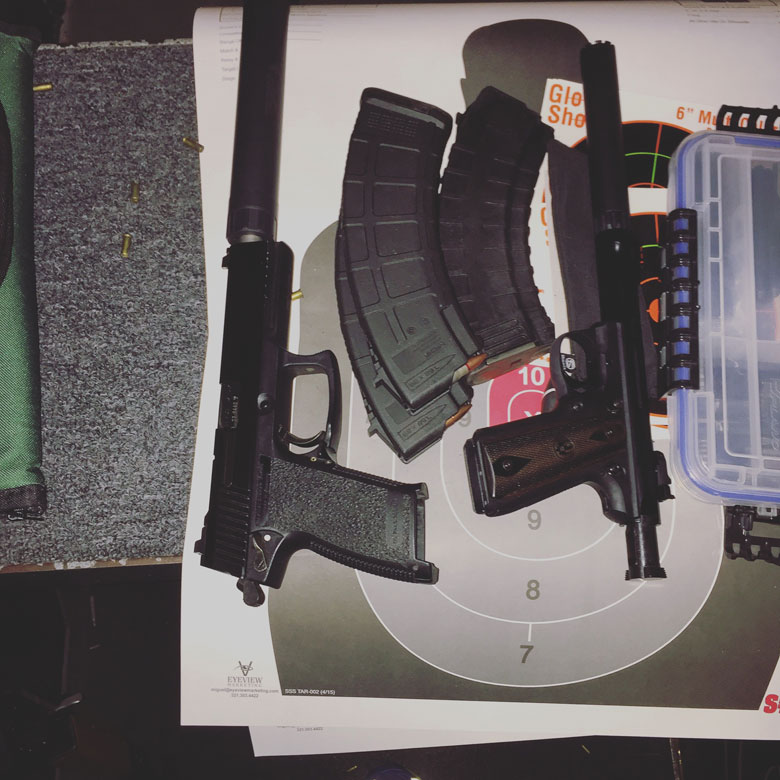
Hard as it may be for some newer shooters to believe, “vanilla” shooting practice can get boring and even tedious. Ask any veteran trainer and they’ll back me up. Shooters are people who are more or less unique, but their behavioral sets can be broadly sorted into categories. Depending on the shooter, they’ll find themselves in a rut in one of a few ways.
For some shooters, maybe just getting to a range for private practice is a time-consuming or expensive proposition. Perhaps you can only spare or afford a box of ammo for practice in the first place and feel like the cost-benefit ratio isn’t high enough to warrant a trip to the range. We’re all operating on budgets for our energy, time and finances. Whatever the case, logistical restrictions are the prime characteristic of this type of rut.
A certain set of shooters will fall victim to either complacency or a lack of structure and goals in practice. For the complacent, they may think they’re “just good enough.” Good enough is the bastard cousin of comfortable. Shooters that think they’re good enough may be content to be the best guy at the range, the best guy in their unit, or simply enjoy smoking the same drills with the same standards over and over. While these shooters may be decent, even very good, they’re cheating themselves with their lack of push and lack of drive.
A shooter who heads to the range with enthusiasm but no structure and no clear vision of what they’re trying to accomplish besides “shoot well” won’t see improvement in any meaningful or consistent way. Without a plan to deliberately refine fundamentals and track progress, they’ll expend a good amount of sweat and brass for marginal gains. Ignorance or lazy application of good practice procedures describes this kind of shooter and this rut is defined by a lack of structure.
Whatever an individual shooter’s reasons for missing quality time working the basics, the end result will always be the same; stagnation, or worse, degradation of skills. Shooting skills wither far quicker than you think. If you don’t believe me, ask any seasoned gunhand how they did their first time going fast and hard after a protracted hiatus or long period of lackluster practice. Typically they’ll regale you with a tale of profound and wobbly suckitude.
If any of the above ruts describe you, you’re in luck. Below you’ll find my prescription for getting the most gains from your range time.
Time to Shake Off the Cobwebs
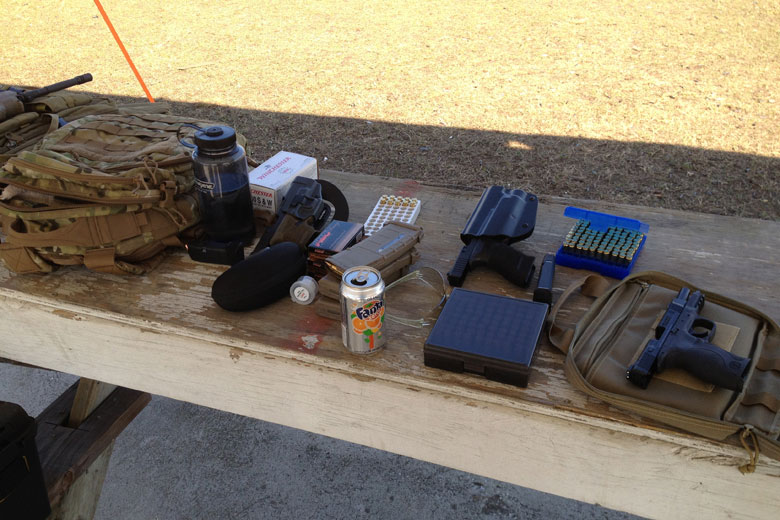
Before you do anything else and I mean anything else, define your goals. What should your goals be? You tell me! I know it’s kind of a loaded question, but there’s no one true standard for proficiency with a gun. I myself want to be so fast that I put lightning to shame and so accurate I can split an atom. I practice with that goal in mind. Now, I’m well aware that most people simply crumble when confronted with an impossible standard instead of striving to meet it, so let’s decide on some more tangible goals.
If you work for an agency or other professional organization, your qualification standards for duty will be your bare minimums. A citizen may decide to use a state qualification for a concealed weapons permit class or some other arbitrary metric as a standard.
Wherever you are and whatever you do professionally as a shooter, the most tried and true standard is yourself.
You should be practicing and training to beat your last performance and do so soundly. (For those of you who just want an arbitrary standard for proficiency, I’ve provided one farther down in the article.) Once you beat your last standard and can do so reliably, tighten it up and increase distance, decrease the time constraint or both.
In order to accurately gauge how we’re progressing, we must track our progress. It’s best to track distance, score and time on our chosen drills when gathering data. To do this, you’ll need a shot timer (or equivalent app on your smartphone) and a notebook or some kind of organizational app.
Now perhaps your local public range is always super busy and the staccato shots from other shooters will preclude your timer from accurately recording your splits. That’s okay, you can set your timer for intervals (start and par signal) that you can hear and know if you’re beating, squeaking in or failing your time standards. If you don’t have a shot timer or app, just record your score and distance in your logs.
Now you’re accountable, if only to yourself. These two tools alone, used religiously, will see you improve steadily. If you hate keeping records and comparing results, well that’s tough. You can do this all by feel, hope, positive vibes and wishing for the best or by focused practice reps, recording and comparing real data, then setting achievable and incremental goals. This puts you in a positive reinforcement loop that will see your skill jump by bounds.
A Productive Day at the Range in Record Time
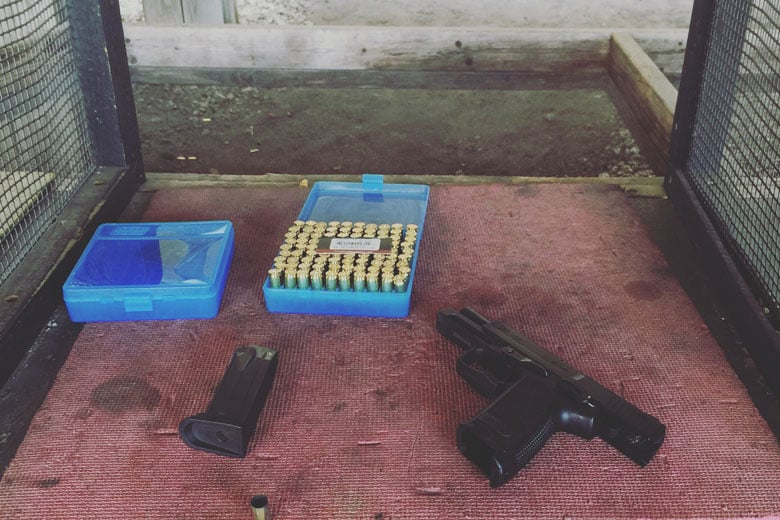
If you’re training on a very limited ammo budget or are constantly short on time, I feel you. We’ve all been there. You may be further stymied on how you can practice with those onerous restrictions and rules at your local range. Yikes, how am I supposed to get better?! The good news is you can get in a great practice session with significant improvement with just a box of 50 rounds and a half hour on the range. I know that sounds like some lame fitness gadget pitch, but I swear it’s true. Head in, bang it, record results and get out. Now that’s done, it’s time to pick up dinner and bask in your accomplishment. I’ll give you an example below of my typical practice session and my personal favorite drill for standards that I can do almost anywhere.
First things first, I shoot for standards cold. I’m very passionate about this, for myself and everyone. I don’t measure how good I am by my results when I’m warmed up, my barrel is piping hot and I am feeling froggy. I care about how I shoot cold and fresh out of the holster; when I still have the little jitters and my mind is orbited by a constellation of other concerns. Getting mentally locked on in a hurry will very much be a factor in a confrontation, so I don’t make any allowances for mulligans or warming up on my baseline. You shouldn’t either.
My current favorite standards drill is the F.A.S.T. Drill (Fundamentals, Accuracy and Speed Test) designed by the late Todd Green. Plenty of you have probably heard of it, or even shot it. I love it because it’s soul-crushingly tough to ace and mandates fluency in all aspects of gun handling and shooting to pass it quickly. Even a slight bobble will cost you badly enough that you wind up botching the drill. Another perk is that it only takes 6 rounds to perform and can be done on nearly any range. The drill is as follows:
Target: ISPC Silhouette with 3×5 an index card centered horizontally on the head, with an 8 inch circle centered on body.
Range: 7 yards
Rounds Fired: 6
Starting Position: Pistol loaded with 2 rounds, spare magazine loaded with 4 rounds. Pistol holstered either concealed or in duty rig with retention active. Shooter faces down range with arms at sides (start from the ready position if you aren’t allowed holster work at your range).
Procedure: Upon start signal, shooter draws and fires two rounds at head target (index card), performs a speed reload from slide lock and fires 4 rounds into the body target (circle). Par times are below. (Shorten by 1.5 seconds if starting from the ready position.)
Novice Par Time: 10+ seconds
Intermediate Par Time: Less than 10 seconds
Advanced Par Time: Less than 7 seconds
Expert Par Time: Less than 5 seconds.
It doesn’t look so tough on paper, but I promise it’ll put you to a severe test. I’ll run the F.A.S.T drill cold, record how I did in my logs and then move on to other work.
At this point, I’m only 6 rounds in and from here I have options. I can choose a drill or two for variety to work speed and keep things interesting; one that I can perform easily at my range. My current favorite is Bill Blower’s Hateful Eight drill, another humbler and one that only requires 8 rounds. If I want a good all-around workout with no fuss, I can hang up a Dot Torture target and work that. Dot Torture will test your focus because it seems so simple at first, especially at close range. You’ll notice both are high-value drills that use minimal ammo, are difficult and can be executed at nearly any range. Don’t just work drills you’re good at!
If I need to work accuracy, I’ll move the target all the way out to 25 yards (or however far your groups start to fall apart) and just shoot bullseyes for score. There’s no magic to it, but there’s very little that will force you to lock down the fundamentals like long range work. This can be sobering for guys and gals that only work at 7 yards and in. That’s good though, if you aren’t sweating your performance a little then you aren’t growing.
Once I’m done and closing in on half an hour, I’ll re-run the F.A.S.T drill and notate how much better or worse I did than the initial drill. For my purposes, the “cold” run is my new standard. Now I’m done. Once I leave the bay, I’ll record rounds fired and any other notes or thoughts on my performance in my training log, and head out.
The Aftermath
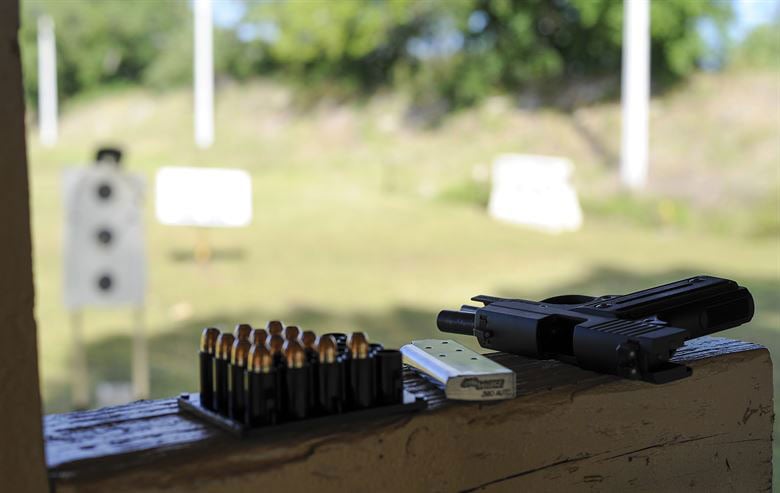
Between here and my next session I’ll be diligent about my dryfire practice; usually 3 times a week for about 15 minutes each session. I’ll also relentlessly badger my friends about getting to the range. The next time I head in, I usually do better on my standards than the time before. Sometimes a little, sometimes a lot.
I often don’t feel faster or more accurate, as my goal is always just ahead and just out of reach. However thanks to my records I know what’s up. Comparing my recent performances to those 6 months ago makes me feel pretty good.
The bottom line is that growth has occurred. The “me” of this month could defeat the “me” of last month. Good job, me. You don’t need to do the drills I do, but they’re good if you need a challenge or a wake-up call.
Don’t plink away at the range for lack of challenge or structure, or think a short session with little trigger-pulling is useless. The cure for both ruts is strict standards, accountability and challenging, simple drills. Using my example as a structure, you can tailor your practice session accordingly; cold bore standards, drills or fundamentals work, as well as warmed-up standards. All done in about 50 rounds and half an hour. Bam!
Editor-in-Chief’s Note: Chad Nabors writes about firearms, with a strong focus on concealed carry, pistols and daily preparedness. His background is in commercial sales, training and armor development and testing. He’s trained many citizens on the pistol from basic to advanced skills and resides somewhere in Greater Appalachia, where he still rocks a classic double-action SIG. He hates low-quality guns and never wears camo. You can reach him at [email protected]
Photography by Ben Stephens of One Seven Photography.






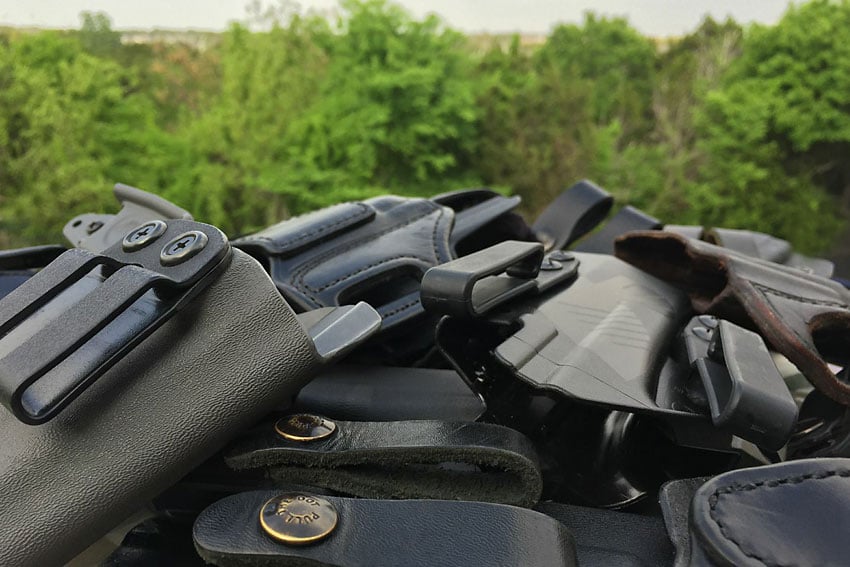
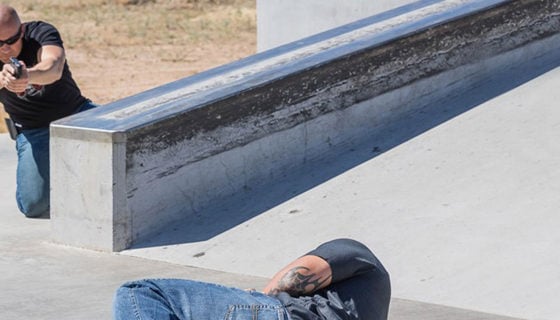
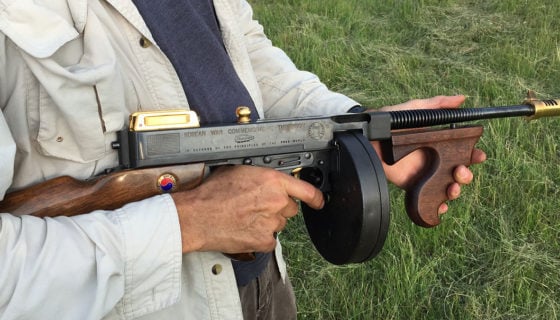
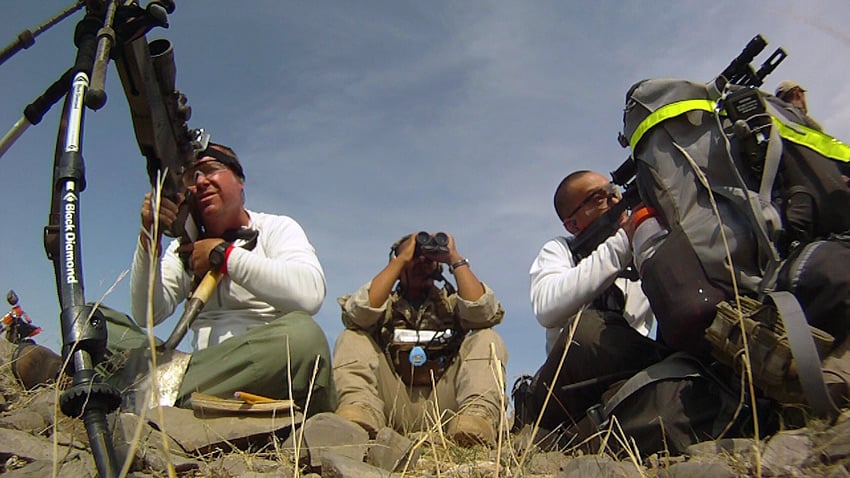

Discussion